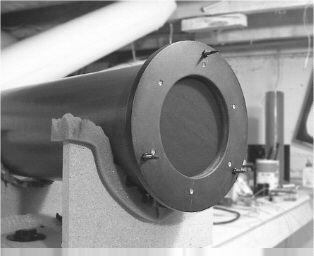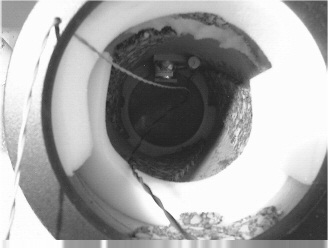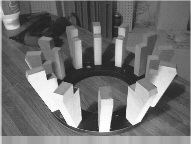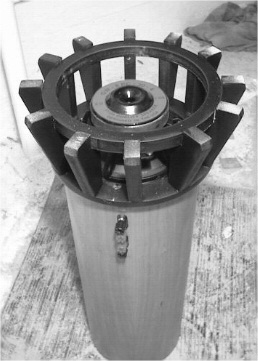|
W H
I T E... P A P E R The RADIAL Loudspeaker model RL-2 by Steve Deckert The RL-2 is a modified design of the RL-1. It incorporates two fundamental changes. The first is a different tweeter. The original tweeter is replaced with a top drawer planar ribbon tweeter - basically the finest I could find. Since the tweeter covers half of the loudspeakers frequency range it stands to reason that using the best available will elevate the fidelity beyond what it already is. The second is related to the enclosure. Since an enclosure is responsible for up to 70% of the sound quality of a given speaker it stands to reason that improving it will elevate the fidelity also. These are the only two things I could think to do to the RL-1 since the actual driver is at a peak in its development and I can't think of any ways to make it any better. This paper will deal with the fairly radical enhancement to the enclosure since there were no modifications needed to swap tweeters. The crossover does not change.
ACTIVE DAMPENING SYSTEM
The Radial design in general has some difficult obstacles to overcome where enclosures are concerned. Because the cone is both very THIN and INVERTED it's very shape now becomes a microphone to the inside of the cylinder. This is why carpet is recommended under the base, to absorb some of this excess back wave. Whatever energy is not absorbed and is reflected back to the cone will be heard on top of music.
Understanding that, the question of how to improve the enclosure becomes how to better control the back wave of the main driver. A vision I get in my head that illustrates what is happening inside this or any tall narrow enclosure is as follows: The enclosure is like a large hallway, such as in an airport terminal. The large hallway is packed with people all running around in different directions with different objectives, and of course some are just lost. Basically a scenario for chaos. All of these people entered and continue to enter the hallway from a door at one end. As the hall fills with people the chaos increases. Well imagine if you could separate the idiots from the orderly to reduce the level of chaos by installing a lounge at the other end of the hallway. They all run for the bar and you never see them again. In the RL-2 I've installed a bar at the other end of the hallway.
By
installing a second driver in the base we basically have a passive
radiator instead of a vero-vent which is what the RL-1 basically
is when it sets on the carpet. The passive driver still
has a motor assembly and voice coil but is not hooked up to
anything. In the case of a cylinder where the diameter
exactly matches the driver, placing a passive unit at the other
end creates almost a one way valve where energy is absorbed,
modified and dispersed into the room rather than back into the
cylinder. In addition the voice coil is used to modify the dampening factor of the passive by placing different values of resistors across the terminals. This enhances the thermal capacitor effect of the passive by converting energy directly into heat that is dissipated by the voice coil through the pole vent of the passive driver. Bass response of the overall design remains largely unchanged since the lower driver is tuned at the resonance of the cylinder. However bass signature is largely improved since cabinet colorations are no longer detectable. There are two other positive side effects of the RL-2 cabinet base design. The first is that by raising the cabinet height by 6 inches a improvement was noticed in overall sound stage height when listening to the speakers too close or in none optimal set-ups. This is frequent in smaller rooms. The second is that by controlling and modifying the back wave and dispersing it out of the bottom with what the floor sees as another inverted cone, we get enough ambient sound information out of it to largely enhance the overall size and palpability of the sound stage. It's like two pillars that bloom with sound making them even more impossible to locate when you close your eyes, regardless of where you stand in the room. Add this to the rather dramatic improvement in the RL-2 tweeter and I believe these speakers rate up in the very top of audiophile home speakers. One of the flattest sounding speakers that never shout at you, yet have the highest level of detail on both the top mid and bottom that I've only heard on the most esoteric speakers. When we did our serious listening evaluations primarily focused on comparing the RL-1 to the RL-2, the first thing I thought about was a $6500.00 price tag. As good as the RL-1's they just aren't RL-2's. From one perspective they are very similar, from the other perspective they're not even close. Our in-house rating system involves several opinions including one man who started listening to and building hi-fi in the 50's. He is a character who has either owned, heard, or fixed (usually all three) almost every piece of high end audio gear ever made until about 1990 when he decided to give it rest. He is always the hardest nut to crack - a man spoiled by his own tube direct drive electrostatics to a degree that he can't even stand to listen to a cone type speaker! He was quoted as saying, "now that I've heard these I can admit that I really didn't care for the RL-1's that much. They were real good in some ways, but still not my cup of tea. The RL-2's however actually got me exited a few times and I would rate them as better than 95% of all audiophile speakers made, price aside." With the exception of the Zen Triodes, this man has never liked anything so we were actually shocked. All this aside we realized it now looks like a rocket and noted that if we made the grill more pointed at the top and stuck a fuse on it we could paint a pair white and put some USA decals on them so they look like real missiles and call them the bin Laden Specials.
Steve Deckert
Decware is a trademark of High Fidelity Engineering
Co. |
 The
original RL-1 cabinet is still used but with a different cabinet
base design. On the original RL-1 the cabinet is an 8
inch cylinder that terminates into a 10 inch diameter base.
The base is like a donut allowing the cylinder to vent
through the bottom. There are adjustable spikes on the
RL-1 cabinet base that allow you to change the height of the
enclosure in relation to the floor it sets on. In most
rooms carpet is required to be in close proximity to the base
if not almost touching it to prevent the somewhat colored sound
inside the cylinder to cloud the presentation.
The
original RL-1 cabinet is still used but with a different cabinet
base design. On the original RL-1 the cabinet is an 8
inch cylinder that terminates into a 10 inch diameter base.
The base is like a donut allowing the cylinder to vent
through the bottom. There are adjustable spikes on the
RL-1 cabinet base that allow you to change the height of the
enclosure in relation to the floor it sets on. In most
rooms carpet is required to be in close proximity to the base
if not almost touching it to prevent the somewhat colored sound
inside the cylinder to cloud the presentation. This
fundamental problem has been resolved in the RL-1 as far as
possible by designing the main driver with a large cast motor
assembly which largely blocks the reflected back wave off the
bottom of the enclosure. Add to that some trial and error
placement of different dampening materials on the cylinder walls
in the correct patterns and you have made it possible to get
very good sound out of an otherwise impossible design.
This
fundamental problem has been resolved in the RL-1 as far as
possible by designing the main driver with a large cast motor
assembly which largely blocks the reflected back wave off the
bottom of the enclosure. Add to that some trial and error
placement of different dampening materials on the cylinder walls
in the correct patterns and you have made it possible to get
very good sound out of an otherwise impossible design. This
was accomplished by creating a cabinet base that would accommodate
a second woofer - magnet side down - so that it fits tight against
the bottom of the cylinder. The base design would also fix the
distance off the floor for optimal performance.
This
was accomplished by creating a cabinet base that would accommodate
a second woofer - magnet side down - so that it fits tight against
the bottom of the cylinder. The base design would also fix the
distance off the floor for optimal performance.